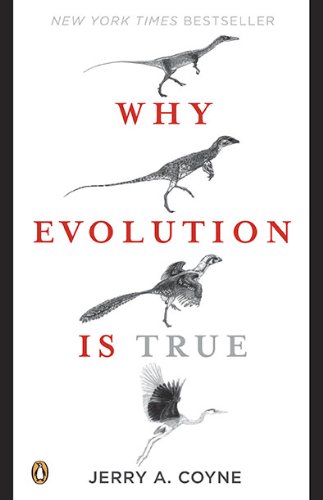Vestigial GLO Pseudogene
And the evolutionary prediction that we’ll find pseudogenes has been fulfilled—amply. Virtually every species harbors dead genes, many of them still active in its relatives. This implies that those genes were also active in a common ancestor, and were killed off in some descendants but not in others. Out of about 30,000 genes, for example, we humans carry more than 2,000 pseudogenes. Our genome—and that of other species— are truly well populated graveyards of dead genes.
The most famous human pseudogene is GLO, so called because in other species it produces an enzyme called L-gulono-y-lactone oxidase. This enzyme is used in making vitamin C (ascorbic acid) from the simple sugar glucose. Vitamin C is essential for proper metabolism, and virtually all mammals have the pathway to make it—all, that is, except for primates, fruit bats, and guinea pigs. In these species, vitamin C is obtained directly from their food, and normal diets usually have enough. If we don’t ingest enough vitamin C, we get sick: scurvy was common among fruit-deprived seamen of the nineteenth century. The reason why primates and these few other mammals don’t make their own vitamin C is because they don’t need to. Yet DNAsequencing tells us that primates still carry most of the genetic information needed to make the vitamin.
[...]
Only evolution and common ancestry can explain these facts. All mammals inherited a functional copy of the GLO gene. About forty million years ago, in the common ancestor of all primates, a gene that was no longer needed was inactivated by a mutation. All primates inherited that same mutation. After GLO was silenced, other mutations continued to occur in the gene that was no longer expressed. These mutations accumulated over time—they are harmless if they occur in genes that are already dead—and were passed on to descendant species. Since closer relatives share a common ancestor more recently, genes that change in a time-dependent way follow the pattern of common ancestry, leading to DNA sequences more similar in close than in distant relatives. This occurs whether or not a gene is dead. The sequence of YGLO in guinea pigs is so different because it was inactivated independently, in a lineage that had already diverged from that of primates. And YGLO is not unique in showing such patterns: there are many other such pseudogenes.
Notes:
Used to produce Vitamin C, alive in most mammals, but dead in humans, primates, and others.
Folksonomies: evolution genes genetics vestigial
Taxonomies:
/science/medicine/genetics (0.525111)
/science/social science/history/genealogy (0.444711)
/pets/reptiles (0.411797)
Keywords:
common ancestor (0.920646 (neutral:0.000000)), primates (0.829226 (negative:-0.334435)), Vestigial GLO Pseudogene (0.767238 (neutral:0.000000)), dead genes (0.681202 (positive:0.209921)), simple sugar glucose (0.579162 (positive:0.355932)), famous human pseudogene (0.575968 (positive:0.297850)), common ancestry (0.533293 (neutral:0.000000)), GLO gene (0.395527 (neutral:0.000000)), pseudogenes (0.359463 (positive:0.350845)), vitamin (0.358034 (positive:0.613984)), evolutionary prediction (0.355128 (positive:0.350845)), mammals (0.354616 (negative:-0.019289)), populated graveyards (0.346598 (positive:0.417793)), L-gulono-y-lactone oxidase (0.342018 (neutral:0.000000)), ascorbic acid (0.340414 (neutral:0.000000)), proper metabolism (0.328825 (positive:0.879620)), fruit-deprived seamen (0.320821 (neutral:0.000000)), normal diets (0.320362 (neutral:0.000000)), fruit bats (0.316151 (negative:-0.221807)), nineteenth century (0.313411 (neutral:0.000000)), genetic information (0.311855 (negative:-0.328250)), guinea pigs (0.305869 (neutral:0.000000)), distant relatives (0.299165 (negative:-0.557040)), time-dependent way (0.298762 (neutral:0.000000)), species (0.293100 (negative:-0.207872)), functional copy (0.291386 (neutral:0.000000)), DNA sequences (0.273535 (negative:-0.557040))
Entities:
Vitamin C:FieldTerminology (0.812345 (positive:0.613984)), GLO:Company (0.467886 (positive:0.082957)), scurvy:HealthCondition (0.246818 (negative:-0.575364)), DNAsequencing:Person (0.224394 (neutral:0.000000)), vitaminC:FieldTerminology (0.204045 (neutral:0.000000)), forty million
years:Quantity (0.204045 (neutral:0.000000))
Concepts:
Evolution (0.956199): dbpedia | freebase | opencyc
DNA (0.924086): website | dbpedia | freebase | yago
Vitamin C (0.707699): dbpedia | freebase | opencyc
Genetics (0.629957): dbpedia | freebase | opencyc
Glucose (0.591711): dbpedia | freebase | opencyc
Gene (0.526734): dbpedia | freebase
Ascorbic acid (0.438877): dbpedia | freebase
Ancestor (0.423957): dbpedia | freebase





